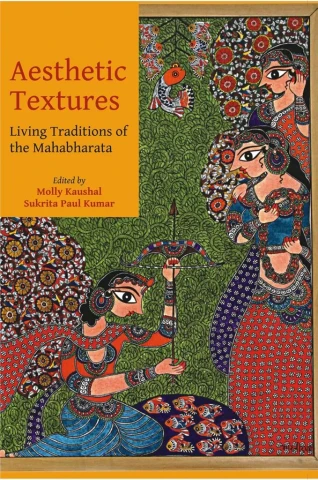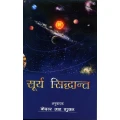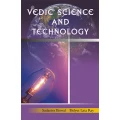Shop by Category

Short Description
The book explores the multiple tellings and retellings of the Mahabharata story as sung, danced, and celebrated in festivals, inscribed on to geographic landscapes, committed to memory as sacred genealogy, embodied in rituals, and sculpted in shrines and temples. Rather than exploring the Mahabharata as a book or a singular narrative, these papers focus on the multi-tradition of the Mahabharata in all its multidimensionality, multiplicity, and above all, in its fluidity.More Information
| ISBN 13 | 9788124609989 |
| Book Language | English |
| Binding | Hardcover |
| Total Pages | 464 |
| Edition | 1st |
| Release Year | 2019 |
| Publisher | D.K. Printworld Pvt. Ltd. |
| Author | Molly Kaushal, Sukrita Paul Kumar |
| GAIN | XXCVZMYN7J9 |
| Category | Cultural Studies Theatre, Drama Classical |
| Weight | 1,250.00 g |
| Dimension | 14.00 x 22.00 x 1.80 |
Frequently Bought Together

This Item: Aesthetic Textures: Living Traditions of the Mahab...
₹1,800.00
Sold by: DK Printworld
Choose items to buy together
ADD TO CART



This Item: Aesthetic Textures: Living Traditions of the Mahabharata
Sold By: DK Printworld
₹1,800.00
Total Price : ₹1,800.00
Product Details
The fascinating world of multiple Bharatas that this book introduces its readers with is that of a perennial tale discovered and created afresh at each juncture of time; at each moment of self-doubt and self-exploration; at each rejoicing of self-discovery and self-recovery. If one does not come across a seamless continuity here, one does not encounter apparent ruptures either. The Bharatas, as narrated here, present us with amazing diversity with palpable consubstantiality expressed in myriad forms and multiple hues; tradition belonging as much to its contemporaneity as to its past; belonging as much to the spokes as to the axle; centrifugal and centripetal at once; a tradition old and new at the same moment of time.
The book is based on the proceedings of a seven-day international conference organized by the Indira Gandhi National Centre for the Arts (IGNCA) on the living traditions of the Mahabharata in the year 2011. The conference explored the multiple tellings and retellings of the Mahabharata story as sung, danced, and celebrated in festivals, inscribed on to geographic landscapes, committed to memory as sacred genealogy, embodied in rituals, and sculpted in shrines and temples. The presentations ranged from issues of poetics and ethics to translations, adaptations, and variations to folk and tribal traditions as sung, recited, and performed. Rather than exploring the Mahabharata as a book or a singular narrative, these papers focus on the multi-tradition of the Mahabharata in all its multidimensionality, multiplicity, and above all, in its fluidity. The book would certainly interest the scholars engaged in the study of the living heritage of Indian epics, folklorists, indologists, and anthropologists.














